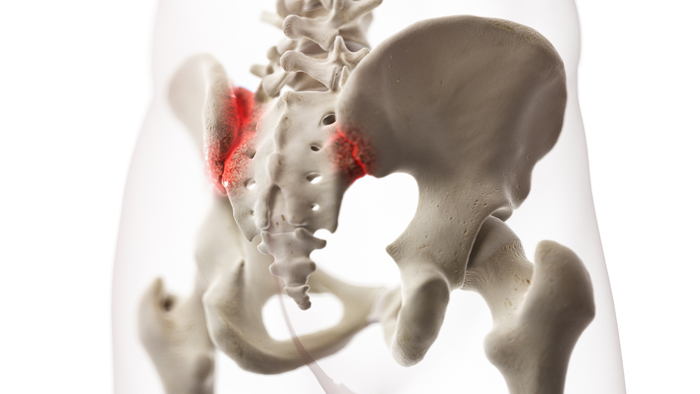Sacroiliac Joint Pain Treatment & Diagnostics in Chunni Ganj, Kanpur
Sacroiliac Joint Pain
While performing basic activities like walking or getting up from a chair, if one experiences chronic pain in their lower back, pelvis, thighs, or legs, it is known as Sacroiliac Joint Pain or Sacroiliitis.
Often mistaken for problems like Sciatica or Arthritis due to the pain in the lower back, Sacroiliitis can be difficult to diagnose. But once diagnosed, it can be treated through various therapy methods, exercises, medications, or surgery, if needed.
What is Sacroiliac Joint?
The Sacroiliac or the SI joint is situated right where the lower part of the spine and the pelvis connect. There are two sacroiliac joints, one on each side of the lower spine.
The main function of these joints is to carry the weight of your upper body and shift that load to your pelvis and legs when doing activities like standing or walking. This helps absorb shock and reduce the pressure being put on the lower back area.

When bones in the SI joint move out of alignment, it can lead to discomfort and pain in the area around the joints.
Symptoms of Sacroiliitis
Although symptoms may vary from person to person, the most common symptom of this dysfunctioning of the joint, as mentioned before, is prolonged pain in the lower spine and buttocks, and can also move ahead to thighs, legs, and the groin.
A burning sensation or stiffness in the lower back or pelvis region, especially when sitting, or increased pain while getting up are other issues caused by the pain in the SI joints.
It is also possible that one experiences pain limited to only one of the joints, or does not experience radiation of the pain to other body parts.
What causes this dysfunctionality?
Due to the inflammation of the joints caused by injury to the bones in the region, pain and stiffness can occur in the pelvis. Such inflammation may also be caused by an internal infection as well.
Too much movement like prolonged standing, climbing stairs, or jogging, can also cause inflammation due to overuse of the joints.
Pregnancy can also be a cause for this problem in women since their bodies release hormones that cause the joints to loosen up, which further causes changes in the way the joints move.
Favoring one leg while walking in certain people can lead to abnormal walking patterns which are also a cause of the SI joints’ dysfunctionality.
Cartilage over the sacroiliac joint wears off with age and can cause sacroiliitis.
Other issues like osteoarthritis can occur in sacroiliac joints or ankylosing spondylitis, the type of arthritis that affects the spine can also lead to SI joint pain.
When to see a doctor?
When experiencing continuous or prolonged pain in the lower back and/or pelvis region that obstructs your daily life activities and causes difficulty in moving around, do not wait for the problem to deteriorate and schedule an appointment with a doctor.
Request an appointment at Apollo Spectra, Kanpur
Call 1860-500-2244 to book an appointment
Treatments for SI Joint Pain
Different treatment options are available at Apollo Spectra, Kanpur, to treat sacroiliitis depending upon the severity of the problem and the majority of these do not involve surgery unless the inflammation does not decrease through other methods.
- Physical Therapy
- Exercise
- Medications
- Chiropractic Treatment
- Surgery
How to prevent this from happening to you?
Although some causes of SI joint pain cannot be prevented, its progression can be slowed by following a healthy and active lifestyle, and also by trying to maintain a good posture while walking.
Conclusion
According to studies, 15-30% of the people who face the above-mentioned symptoms are diagnosed with Sacroiliitis.
Since diagnosing it can be difficult at times, please be patient and sure with the doctor throughout the process.
These are two different conditions often affecting a similar area of the body, hence leading to confusion.
Acute SI joint pain can heal within weeks while chronic SI joint pain can take more than three months, depending on the activities performed by the person.
Acute and manageable SI joint pains can be relieved by taking rest or applying ice packs but if persists, immediately contact your doctor.
Symptoms
Our Top Specialities
NOTICE BOARD
CONTACT US
CONTACT US
 Book Appointment
Book Appointment


.svg)
.svg)
.svg)
.svg)








